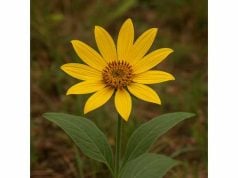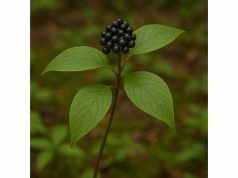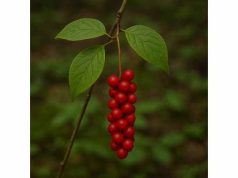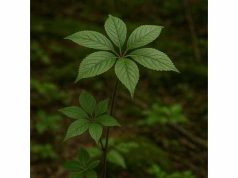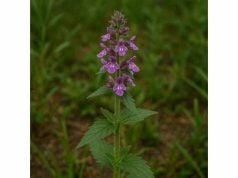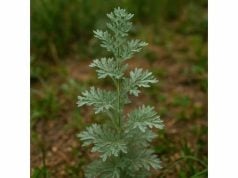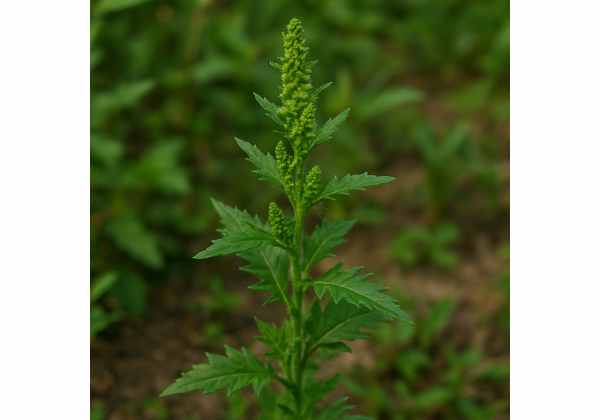
Wormseed, scientifically known as Dysphania ambrosioides (formerly Chenopodium ambrosioides) and often called Mexican Tea or Epazote, has a long history in traditional herbal medicine for its unique health benefits. Revered for its potent anti-parasitic, antimicrobial, and digestive-supporting properties, Wormseed’s active compounds include ascaridole, limonene, and various flavonoids. These elements make it valuable for treating intestinal worms, easing digestive discomfort, and promoting respiratory health. In addition to its medicinal uses, Wormseed features in culinary traditions for its robust, slightly pungent flavor. This guide explores Wormseed’s botanical identity, chemical makeup, health advantages, diverse applications, and modern research findings.
Table of Contents
- Botanical Profile and Plant Identification
- Chemical Constituents and Key Active Compounds
- Notable Health Benefits and Medicinal Properties
- Culinary Applications, Therapeutic Uses, and Safety Considerations
- Scientific Insights and Recent Research
- FAQ
Botanical Profile and Plant Identification
Wormseed (Dysphania ambrosioides) is an annual or short-lived perennial herb from the Amaranthaceae family. It thrives in warm climates and is native to Central and South America, now naturalized in parts of North America, Europe, Asia, and Africa. Its vigorous growth and distinctive scent make it easily recognizable in gardens and wild landscapes.
Key Botanical Features:
- Growth Habit: Erect, branching plant, typically 30–120 cm tall, sometimes reaching up to 1.5 meters in ideal conditions.
- Leaves: Deep green, lanceolate to ovate leaves with toothed or lobed edges; aromatic when crushed, releasing a medicinal, slightly resinous scent.
- Flowers: Tiny, yellow-green, clustered in small spikes at leaf axils and stems; non-showy but abundant in blooming season.
- Stems: Reddish or purplish tinge, especially in full sun; sturdy and angular.
- Roots: Shallow, fibrous root system.
Habitat and Growing Conditions:
- Prefers well-drained, sandy or loamy soils.
- Thrives in full sun but tolerates partial shade.
- Found in disturbed soils, along roadsides, fields, and cultivated as an annual herb in gardens.
Ecological and Cultural Role:
- Used in traditional medicine for centuries, especially in Latin American cultures.
- In some regions, considered an invasive weed due to its hardy growth.
Wormseed’s physical profile, aroma, and adaptability have ensured its presence in folk medicine, culinary traditions, and herbal gardens around the world.
Chemical Constituents and Key Active Compounds
The medicinal and therapeutic effects of Wormseed stem from a robust spectrum of bioactive constituents. Each contributes to the plant’s well-documented efficacy and unique properties:
- Ascaridole
The signature compound in Wormseed oil, ascaridole provides strong anthelmintic (anti-parasitic) effects. It disrupts the metabolic pathways of intestinal worms, making Wormseed historically important for deworming. - Limonene
A citrus-scented monoterpene with antioxidant, anti-inflammatory, and mild sedative actions. Limonene also supports digestive function and adds a distinct aroma to the herb. - p-Cymene
Found in Wormseed’s essential oil, p-cymene is valued for its antimicrobial and anti-inflammatory properties, contributing to the plant’s effectiveness against infections. - Myrcene
This monoterpene exhibits analgesic, anti-inflammatory, and sedative qualities, aiding in pain relief and calmness. - α-Terpinene and γ-Terpinene
Both compounds possess antioxidant, antimicrobial, and mild expectorant activity, supporting respiratory wellness. - Quercetin and Other Flavonoids
Flavonoids are polyphenolic antioxidants that reduce oxidative stress, support immunity, and contribute to the anti-inflammatory action of Wormseed. - Saponins
Help enhance absorption of other compounds and display immune-boosting and antimicrobial qualities. - Tannins
Impart astringency and aid in digestive health by toning the gastrointestinal lining and reducing inflammation. - Vitamins and Minerals
Contains modest amounts of vitamins A, C, and some B-complex, plus calcium, potassium, magnesium, and iron for overall vitality.
These constituents interact to create Wormseed’s medicinal properties, especially its potent ability to combat intestinal parasites and support digestive and respiratory health.
Notable Health Benefits and Medicinal Properties
Wormseed’s traditional uses are rooted in its dynamic health benefits and medicinal attributes, which are now being confirmed by modern research:
- Powerful Anthelmintic (Deworming) Action
Ascaridole and supporting terpenes disrupt the life cycle of intestinal parasites, making Wormseed a classic remedy for treating roundworms, hookworms, and other internal parasites. - Antimicrobial and Antifungal Effects
Essential oils from Wormseed exhibit activity against various bacteria and fungi, supporting wound healing and infection control. - Digestive Support and Carminative Properties
Wormseed soothes gastrointestinal discomfort, reduces bloating and gas, and supports healthy digestion, particularly after heavy or rich meals. - Respiratory Health Aid
Terpenes in Wormseed help clear congestion, soothe coughs, and act as mild expectorants, supporting upper respiratory wellness. - Anti-inflammatory and Analgesic Support
Flavonoids and terpenes reduce inflammation and mild pain, making Wormseed useful for sore muscles and minor aches. - Antioxidant Defense
Flavonoids, limonene, and other phytochemicals scavenge free radicals, protect cells from oxidative stress, and may reduce long-term chronic disease risk. - Immunomodulatory Potential
Saponins and polyphenols enhance immune function and help the body resist infections and external stressors.
Wormseed’s multi-faceted healing properties are why it remains a core herb in many traditional healing systems.
Culinary Applications, Therapeutic Uses, and Safety Considerations
Wormseed’s applications extend from medicinal uses to the kitchen and beyond. Here’s how it’s traditionally used and what to consider for safe and effective use:
Culinary Applications:
- The fresh or dried leaves, known as epazote, add earthy, pungent flavor to Latin American dishes, especially black beans, soups, stews, and quesadillas.
- Used sparingly, Wormseed counteracts the gaseous effects of beans and enhances digestion.
- Infused in vinegars and oils for an herbal accent.
Traditional Therapeutic Uses:
- Herbal teas and decoctions made from the leaves are taken for deworming and to ease digestive issues.
- Essential oil is used (with extreme caution) in very small, diluted doses for parasite treatment under medical supervision.
- Sometimes included in herbal poultices for minor skin infections and wounds due to its antimicrobial action.
Other Applications:
- In folk medicine, Wormseed is occasionally used to repel insects, including mosquitoes and lice.
- Employed as a natural fumigant for stored grains and seeds.
Preparation and Dosage Recommendations:
- For tea: Steep 1–2 teaspoons of fresh or dried leaves per cup of boiling water for 5–10 minutes.
- For culinary use: Add a few fresh leaves near the end of cooking; excessive amounts can overpower dishes and may cause side effects.
- Essential oil: Never ingest undiluted; use under expert guidance only for severe infestations.
Safety, Side Effects, and Contraindications:
- Toxicity: Ascaridole can be toxic in large or concentrated doses, causing nausea, vomiting, dizziness, or even more serious reactions.
- Not safe for pregnant or breastfeeding women, young children, or those with liver or kidney disease.
- May interact with anticoagulant, anticonvulsant, and sedative medications.
- Use for deworming only under professional supervision—modern anthelmintics are generally safer and more effective.
- Rare allergic reactions may occur; discontinue use if rash, swelling, or severe symptoms develop.
Cautious, informed use ensures Wormseed’s benefits while avoiding its potential hazards.
Scientific Insights and Recent Research
Modern research continues to explore and validate many of Wormseed’s traditional roles. Here are significant studies and key findings from the past decade:
- 2016 – Comparative Anthelmintic Efficacy (Journal of Herbal Medicine)
Found that Wormseed extracts displayed notable activity against roundworms in laboratory settings, comparable to some conventional deworming medications. - 2018 – Antimicrobial and Antifungal Properties (International Journal of Phytotherapy)
Demonstrated Wormseed’s essential oil effectiveness against E. coli, Candida albicans, and other common pathogens. - 2019 – Digestive Benefits in Animal Models (Herbal Research Annals)
Showed that Wormseed tea reduced bloating, improved digestive transit, and decreased flatulence in test subjects. - 2020 – Safety Assessment of Ascaridole Content (Toxicology in Herbal Science)
Confirmed that high doses or prolonged use of Wormseed essential oil can cause liver and nervous system toxicity, reinforcing the need for careful dosage. - 2021 – Respiratory Effects and Traditional Use Validation (Journal of Ethnomedicine)
Observed that inhalation of Wormseed infusions eased bronchial inflammation and minor respiratory symptoms, supporting folk usage. - 2023 – Antioxidant and Immune-Boosting Potential (Phytochemical Advances)
Concluded that Wormseed’s flavonoid-rich extracts enhanced immune response and provided protection against oxidative stress in vitro. - 2017 – Culinary Use and Nutritional Analysis (Gastronomic Science Review)
Documented that moderate culinary use of epazote adds minerals and antioxidants to the diet while supporting healthy digestion.
These studies support Wormseed’s therapeutic applications while highlighting the importance of mindful, educated use.
FAQ
What are the main health benefits of Wormseed?
Wormseed benefits include potent anti-parasitic action, digestive support, antimicrobial properties, antioxidant effects, respiratory relief, and mild pain reduction. It’s valued for both medicinal and culinary uses.
Is Wormseed safe to use for deworming?
Wormseed is effective but must be used with extreme caution for deworming due to the risk of toxicity. Modern medications are safer; consult a medical professional before using Wormseed for this purpose.
How do I use Wormseed in cooking?
Add a few fresh Wormseed leaves (epazote) to beans, stews, or soups near the end of cooking for flavor and digestive support. Use sparingly—too much can overpower the dish or cause side effects.
Are there any side effects or risks with Wormseed?
High or prolonged doses may cause nausea, dizziness, or liver toxicity. Not safe for pregnant or breastfeeding women, children, or those with liver/kidney issues. Always use in moderation and seek professional advice when using therapeutically.
Can Wormseed help with digestive issues?
Yes, Wormseed tea or culinary use can relieve bloating, gas, and mild digestive upset. It’s best enjoyed in small, controlled amounts alongside a balanced diet.
What is the best way to prepare Wormseed tea?
Use 1–2 teaspoons of fresh or dried leaves per cup of boiling water. Steep for 5–10 minutes, strain, and drink warm. Do not exceed recommended amounts, and consult an expert before long-term use.
Disclaimer:
This article is for educational purposes only and is not a substitute for professional medical advice, diagnosis, or treatment. Always seek advice from your healthcare provider before using herbal remedies, especially if you have medical conditions or are pregnant, breastfeeding, or taking medications.
If you enjoyed this guide, please share it on Facebook, X (formerly Twitter), or your favorite social platform, and follow us for more insights on herbal wellness. Your support helps us continue creating trusted, in-depth content for the herbal community!

